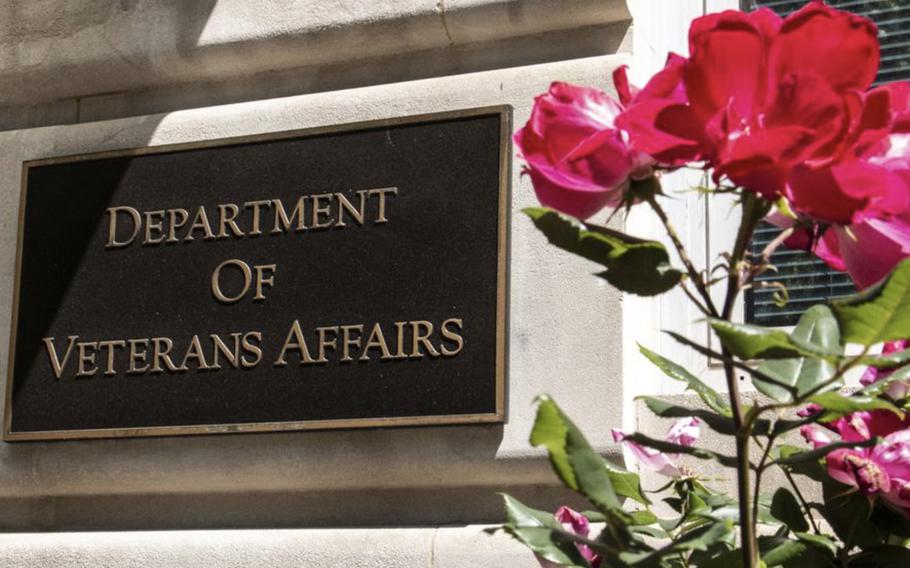
The Department of Veterans Affairs is proposing a 3% cut to its information technology budget for fiscal 2025, with the biggest reductions slated for development and IT infrastructure. (Stars and Stripes)
WASHINGTON — A proposed $8 billion information technology budget at the Department of Veterans Affairs that is 3% lower than the current spending plan prompted questions from House lawmakers about why IT infrastructure and development are targeted for deep cuts in fiscal 2025, while salaries will rise.
“I have no doubt there is waste in the VA budget and unproductive bureaucracy that should be cut,” Rep. Matt Rosendale, R-Mont., said Tuesday at a hearing of the House Veterans’ Affairs Committee’s subpanel on technology modernization oversight. “But the administration seems to be proposing cuts in a lopsided and damaging way.”
Rosendale, who is chairman of the subpanel, told VA leaders at a hearing about the information technology budget that the agency appears to be draining funds from critical areas and might have to return to Congress with a supplemental spending request.
“We are seeing the starving of your department,” he said.
Rosendale said the fiscal 2025 spending plan for information technology includes a 66% cut in funds for infrastructure readiness and an 81% cut in funds for technology modernization.
Salaries for full-time workers and administrators, however, will increase by 5%.
“Congress has always met a budget request, but it should not provide more than what the VA has asked for. How do you plan to implement this budget?” Rosendale asked.
Kurt DelBene, the VA’s chief information officer, said the agency’s goal is for a seamless, secure digital experience for veterans, staff and other users of online VA services.
He said the agency is trying to balance resources with key initiatives and a consistent strategy across the IT department, which employs more than 8,300 full-time workers.
“The employees at the Office of Information Technology deserve that increase,” he said.
DelBene said the proposed $8 billion budget is $49 million less than the fiscal 2024 budget. The fiscal 2025 budget year starts Oct. 1.
He said the focus in 2025 will be on hiring more skilled workers, enhancing cybersecurity and implementing artificial intelligence that enables greater automation of services.
The VA now receives a special salary rate for IT workers, including software developers and artificial intelligence specialists, that is intended to close pay gaps compared to what tech workers can receive in the private industry.
But Rosendale pushed DelBene on whether there will be reductions in contracts with private vendors for information technology as the VA pulls back in development and infrastructure spending.
“We use contractors quite a bit. It is a necessity of the work the VA does. I believe in transparency and am confident there are reductions in spending,” DelBene said.
But he said “tradeoffs” are necessary under a more austere budget, and the VA is strategically scrutinizing where it will emphasize new spending in the coming fiscal year.
“It will require us to be focused on where we invest. We are bolstering cybersecurity. We are allocating the development and modernization funds against high-priority projects. We will not hamper veteran care,” DelBene said. “I am confident we are assigning dollars to the most pressing needs.”
He said spending for cybersecurity will increase by $118 million to $671 million, while other technology services will be maintained.
But Sheila Cherfilus-McCormick, D-Fla., said the VA already has one of the lowest budgets for cybersecurity among federal agencies.
“I am concerned the VA is cannibalizing IT service lines to pay the bills for the rapidly increasing costs of community care for veterans,” she said.
Cherfilus-McCormick was referring to the ability by veterans to access health services from private doctors in their communities when the VA care is not readily available close to home. The cost of community care often is higher than care that the VA provides.
Cherfilius-McCormick also said it can take VA staff 10 minutes just to log on to the sluggish computer system. The VA plans to delay replacing some aging computers under the 2025 budget.
Describing the spending plan as a “keep the lights on budget,” she said it is essential for the VA to ensure IT cutbacks are not impacting services or the delivery of care to veterans.
She urged DelBene and other VA officials to look at how delays in development and modernization of the VA’s IT infrastructure “impacts the front line.”